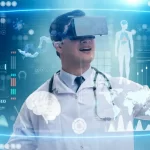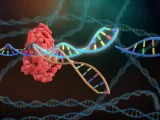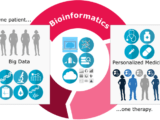
Bioinformatics vs. Computational Biology: Key Differences Explained
February 22, 2025In the rapidly evolving field of life sciences, bioinformatics and computational biology have emerged as essential disciplines for deciphering complex biological data. These interdisciplinary fields integrate computer science, statistics, and mathematics to facilitate a deeper understanding of biological processes. Despite significant overlap, there are distinct differences between the two that are important to understand.
Defining Bioinformatics and Computational Biology
Bioinformatics
Bioinformatics is a multidisciplinary field that combines biological knowledge with computer programming and large datasets. It focuses on developing and applying computational tools to analyze and store biological data, such as genetic sequences, protein structures, and gene expression data. The primary objective of bioinformatics is to manage, interpret, and organize the vast amount of biological data generated by modern research.
Computational Biology
Computational biology, on the other hand, utilizes computational methods and mathematical models to solve biological problems. It focuses on developing theoretical approaches and predictive models to understand biological systems. Computational biology integrates computer science, physics, and engineering to explore complex biological mechanisms and uncover new insights into life sciences.
Key Differences Between Bioinformatics and Computational Biology
1. Goals and Objectives
- Bioinformatics: Primarily focuses on processing and interpreting biological data using computational tools.
- Computational Biology: Aims to develop and apply mathematical models and simulations to study biological phenomena.
2. Approaches and Methodologies
- Bioinformatics: Uses machine learning, data mining, and integration techniques to analyze large-scale biological data (e.g., genomic sequences and gene expression profiles).
- Computational Biology: Employs mathematical models, computational simulations, and quantitative analyses in areas such as systems biology, molecular dynamics, and population genetics.
3. Areas of Focus
- Bioinformatics:
- Genomics and proteomics
- Structural biology
- Functional genomics
- Pharmaceutical and biomedical research
- Big data analysis in biology
- Computational Biology:
- Systems biology and network modeling
- Molecular dynamics and protein folding
- Evolutionary biology and population genetics
- Epidemiology and infectious disease modeling
- Quantitative and integrative omics analyses
4. Tools and Techniques
- Bioinformatics:
- Sequence alignment and phylogenetic analysis
- Gene and protein structure prediction
- Functional annotation and gene ontology
- Pathway analysis and network-based methods
- Algorithm and software development
- Computational Biology:
- Mathematical modeling and simulations
- High-performance computing for large-scale biological data
- Statistical and machine learning methods
- Comparative and evolutionary genomics
- Multi-omics data integration
Applications in Various Fields
1. Medicine and Healthcare
Both fields contribute significantly to personalized medicine, drug discovery, and disease diagnosis. Bioinformatics helps analyze genetic, proteomic, and metabolomic data to understand molecular mechanisms of diseases. Computational biology aids in modeling disease progression and treatment responses using mathematical simulations.
2. Biotechnology and Bioengineering
Bioinformatics supports genetic engineering and synthetic biology by providing analytical tools for genome editing and gene expression studies. Computational biology enables the development of artificial tissues, organs, and medical devices by modeling biological interactions at multiple scales.
3. Environmental Science and Evolutionary Biology
Bioinformatics aids in sequencing environmental samples for metagenomics studies, monitoring biodiversity, and studying climate change impacts. Computational biology helps model ecosystem interactions, track evolutionary changes, and analyze genetic variations across populations.
4. Forensic Science and Defense
Forensic applications include DNA profiling, genetic identification, and biological sample analysis. In defense, bioinformatics and computational biology assist in detecting bioweapons, studying pathogen genomics, and designing vaccines and antimicrobial agents.
Techniques and Approaches
1. Mathematical Modeling and Computational Simulations
Computational models help predict complex biological processes, such as protein folding and metabolic pathways. Simulations are used to study genetic networks, molecular interactions, and cellular behaviors under different conditions.
2. Data Mining and Analysis
Both fields rely on machine learning, clustering, and classification techniques to extract patterns from biological data. Pathway analysis enables the study of interactions among genes, proteins, and other molecules.
3. Database Management and Natural Language Processing (NLP)
Efficient storage and retrieval of biological data are crucial. Bioinformatics utilizes specialized databases like GenBank (for gene sequences) and Protein Data Bank (for protein structures). NLP techniques help automate scientific literature analysis, enabling rapid knowledge extraction.
4. Image Processing
Bioinformatics and computational biology leverage image processing techniques to analyze microscopy images, protein localization, and molecular interactions. Computer vision and AI-based models assist in automated classification and interpretation of biological images.
Subfields and Specializations
1. Transcriptomics
The study of RNA transcripts in different conditions helps identify active and inactive genes, aiding in gene expression analysis and pharmaceutical research.
2. Molecular Modeling
Computational methods for visualizing and predicting molecular structures support drug discovery and biomolecular interactions.
3. Phylogenetics and Evolutionary Biology
Analyzing evolutionary relationships through computational approaches helps reconstruct phylogenetic trees and understand genetic variation over time.
4. Structural Analysis
Predicting 3D structures of biomolecules enables the study of protein functions and interactions, supporting biomedical and pharmaceutical applications.
5. Metagenomics
Analyzing genetic material from environmental samples helps discover novel microorganisms and understand microbial communities.
Conclusion
Bioinformatics and computational biology are complementary disciplines that contribute significantly to modern biological research. While bioinformatics focuses on the analysis and interpretation of biological data, computational biology emphasizes the development of mathematical models to simulate biological processes. Together, they enable groundbreaking discoveries in genomics, medicine, biotechnology, and beyond, shaping the future of life sciences.

















